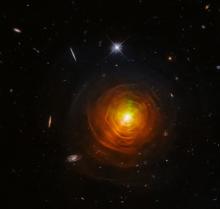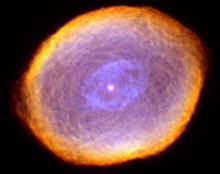Listen to today's episode of StarDate on the web the same day it airs in high-quality streaming audio without any extra ads or announcements. Choose a $8 one-month pass, or listen every day for a year for just $30.
You are here
Alpha Lupi
A bright star with a much brighter future scoots quite low across the sky on these early July evenings. To see it, though, you need to be south of about Dallas or Charleston.
Alpha Lupi is the leading light of the constellation Lupus, the wolf. The star is due south as darkness falls, and sets in the southwest a few hours later.
Alpha Lupi is classified as a blue giant. The “blue” part means its surface is many thousands of degrees hotter than the surface of the Sun. And the “giant” part means the star is many times bigger than the Sun. Add them up and the star shines about 20,000 times brighter than the Sun.
Alpha Lupi is likely to get a lot brighter over the next few million years, though — a result of its fast evolution. Even though it’s only a few percent the age of the Sun, it’s already at the end of its normal lifetime. It’s probably converted the original hydrogen fuel in its core to helium. Now, it’s burning the helium to make heavier elements. Radiation from the hot core is pushing outward on the surrounding layers of gas, causing the star to puff up.
As Alpha Lupi continues to evolve over the next few million years, it’s likely to become bigger and brighter.
Eventually, though, the core will no longer be able to produce nuclear reactions. At that point, the star is likely to explode as a supernova. For a few weeks or months, it’ll shine as brightly as billions of normal stars — bringing its bright but short life to a brilliant end.
Script by Damond Benningfield






